Digitally mediated spaces in Korean
Humor in Korean
PRACTICAL IDEAS AND RESOURCES
Resources in this section curated by: Johanna Lyon, Cathy Lee, Tung Tuaynak, Jermayne Tuckta, and Ken Ezaki Ronquillo

Food and drink Korean Jokes | Article
This website illustrates a considerable amount of Konglish, which means mixing Korean and English. Every item on the website shows how two languages are combined and make new funny words. Also at the same time, most of the new meanings deliver an easy way of conceptual understanding of Korean words within a pragmatic context.
Q: What is the biggest bean in the world?
A: 킹콩! (kingkong)
The word 콩[kong]in Korean means “ bean” and 킹[king] sounds like “king.” When you put them together, you have got the meaning of “Big Bean.” Therefore, King Kong sounds like “big bean” in Korean.

Youk-bama | Article Comment

The sound of the word O [o] within Obama is 5 [o] in Korean. What is the next number after 5; it is 6 [youk] in Korean. So, 5-bama and 6-bama should be brothers!
In general, Korean first name is composed of two syllables/characters, and culturally and traditionally, one of the characters is the same within family or kin; for example, we could notice as siblings whose names are Jin-suk, Jin-Ja, and Jin-Hyung, which have the same character, Jin. This “shared character/ 돌림자” among siblings is traditionally strong, and many families uphold this cultural pattern in the present days.

Zen Comics | Comic Book

The comic book titled Zen comics was written by Ioanna Salajan in 1974. Zen is one school of Mahayana Buddhism which is more popular in China, Korea, Japan, and Vietnam rather than the original place of Buddhism in Nepal or India. Zen comes from Japanese pronunciation which is also called Chan 禪, Seon선, Thiền in China, Korea, and Vietnam, respectively. This comic book is full of oriental philosophical humor. In this session, the old monk’s holding a lady is a questionable manner for a young disciple. This disciple’s question elicits readers’ considerable deep thought as well by using the gradual time process, such as 1 hour later, 5 hours later, and nightfall. Finally, the young disciple asks the un-understandable situation; “I left the girl at the riverside; are you still carrying her?” Readers cannot be laughing from this logical old monk’s answer. Could we really separate my body from our mind? At the same time, I wonder whether Korean learners feel a similar way of laughing that I feel in a language classroom.

Korean Humor | YouTube Video
This is a show of sarcasm that the two people are talking about Korean society’s private educational problems. They are making fun of the overheated out-of-class lessons exaggeratedly, but it is pretty much pinpoint denunciation of the society, which needs to be solved. When language learners notice the humorous sarcasm of the show, it could be an understanding of embedded pragmatics and humor of the Korean speaking style.

A father and a son in the public bathhouse | Traditional Humor
Both Korean and in English the meaning of Cool: being cold, nice
목욕탕
아버지와 아들이 목욕탕에 갔다.
아버지는 뜨듯한 온탕에서 아들을 불렀다.
아버지: 아들아! 너도 이리로 들어와!
아들: 싫어요! 거긴 너무 뜨거워요!
아버지: 뭐가 뜨거워~ 시원하지!
아들: 정말요?
아버지 : 그럼!
아들은 결국 온탕에 들어갔다. 아들은 뜨거워서 깜작 놀라서 나왔다.
뛰쳐나온 아들이 말했다.
아들: 아버지도 믿을 사람이 못 되는 군!
bathhouse
A father and a son went to a bathhouse.
The father called his son in the hot bath.
Father: Son! You come in here too!
Son: No! It's so hot there!
Father: What's hot? It's cool!
Son: Really?
Father: Yes!
The son ended up in the hot tub. The son came out in amazement because it was hot.
Said the son, who ran out: You're not a man to trust either!
